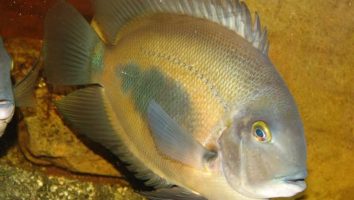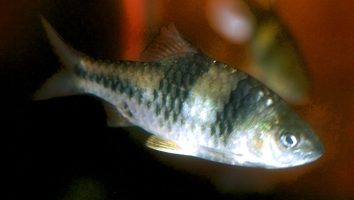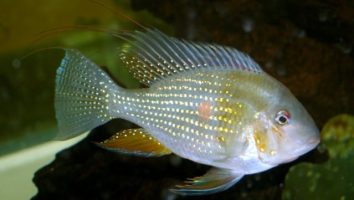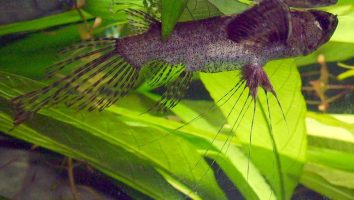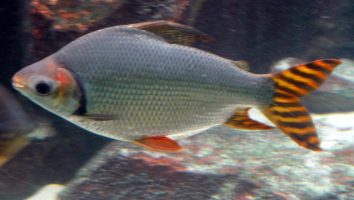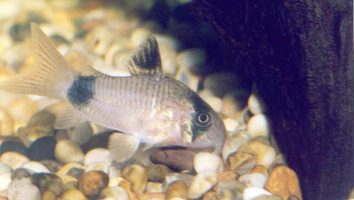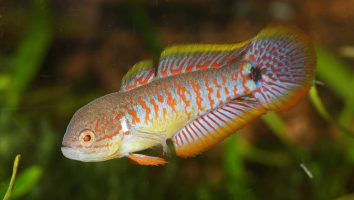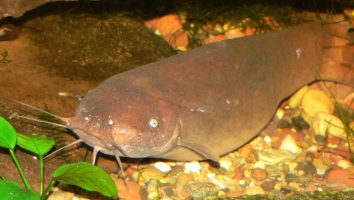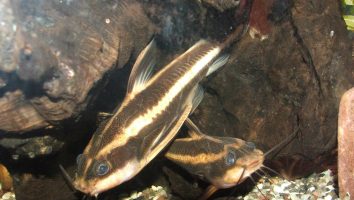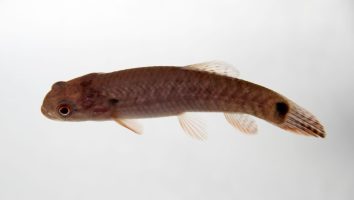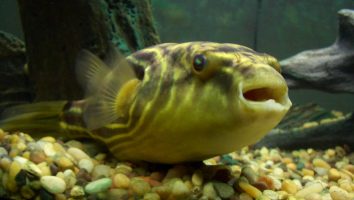The threadfin rainbowfish is a beautiful and popular freshwater fish that is perfect for beginner aquarists. They are easy to care for, and their bright colors add a splash of beauty to any aquarium.
Despite their popularity, there is still a lot of misinformation out there about their care. In this guide, we will dispel some of the myths and set the record straight. You will learn everything you need to know about threadfin rainbowfish care, including diet, tank mates, and more.
Table of contents
Species overview
The threadfin rainbowfish (Iriatherina werneri) is a beautiful freshwater fish that is native to New Guinea. It is one of the most popular rainbowfish in the aquarium trade due to its bright colors and peaceful nature.
Threadfin rainbowfish are relatively easy to care for and make a great addition to most freshwater community tanks. They are not overly aggressive and get along well with other peaceful fish.
These fish are omnivorous and will eat a variety of foods, including pellets, flakes, live food, and frozen food.
Threadfin rainbowfish are one of the most popular rainbowfish species due to their bright colors and peaceful nature.
Appearance
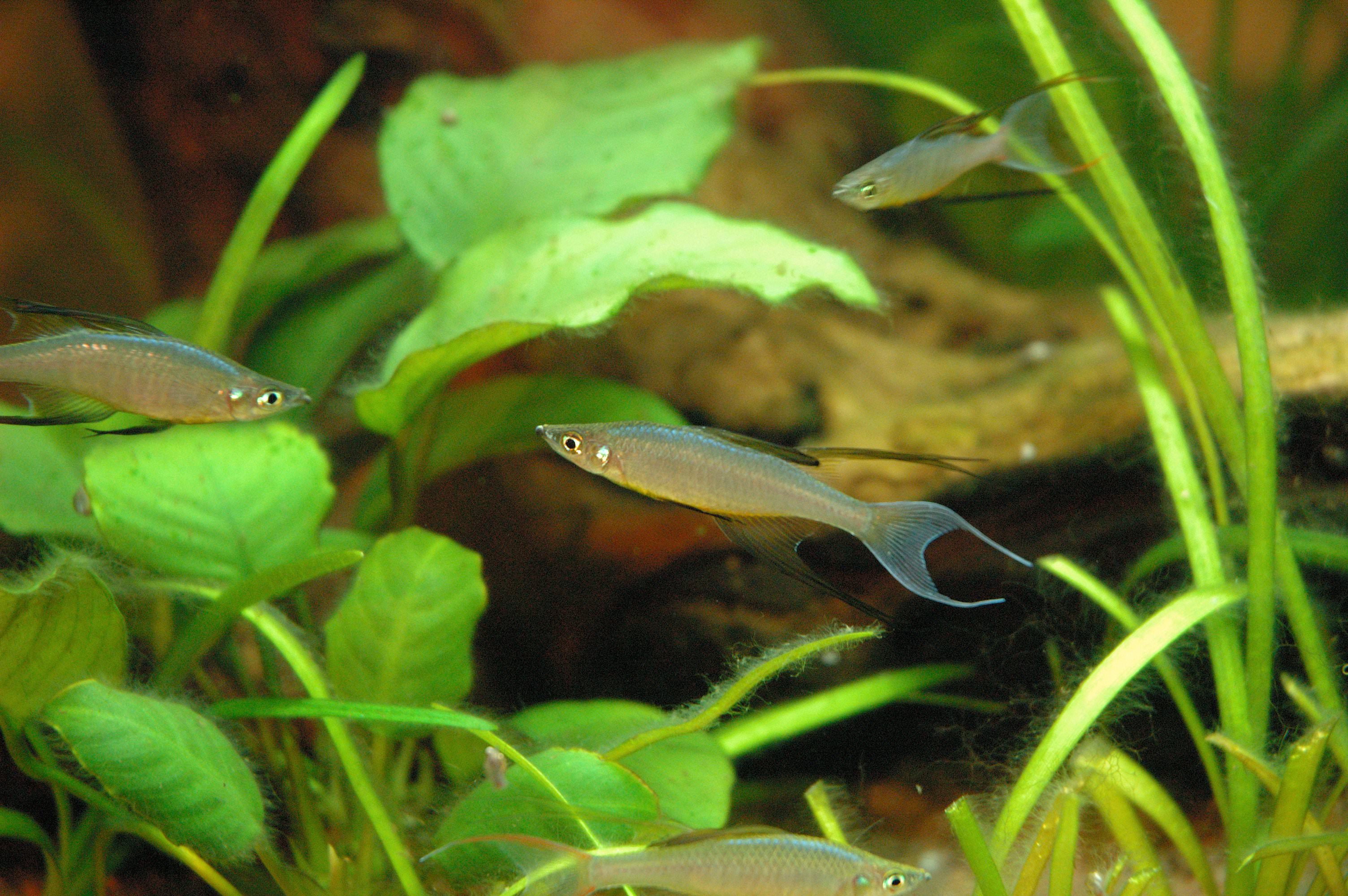
The Threadfin Rainbowfish is a very colorful fish that is sure to brighten up any aquarium. As their name suggests, these fish have extremely long fins that flow behind them as they swim.
The body of the Threadfin Rainbowfish is long and thin. They have a laterally compressed body shape that is common among many fish in the rainbowfish family.
Threadfin Rainbowfish are covered in scales that have a beautiful iridescent sheen to them. These scales are large and easy to see.
The fins on these fish are extremely long and beautiful. The dorsal fin starts about halfway back on the body and extends all the way to the end of the tail.
The anal fin is also very long and starts just before the dorsal fin ends. Both of these fins have a beautiful filigree pattern that is created by the long fin rays.
The caudal fin is forked and symmetrical. The pectoral fins are small and located on the sides of the body just behind the gill plates.
TheThreadfin Rainbowfish is a very peaceful fish that is perfect for community tanks. They are relatively easy to care for and make a great addition to any aquarium.
Lifespan
The lifespan of a threadfin rainbowfish is around 3-5 years on average, although some have been known to live for much longer. The main thing that will affect how long your fish lives is the quality of care it receives.
Threadfin rainbowfish are very hardy fish, but they still need clean water and a good diet to thrive. If they don’t get these things, their lifespan will be significantly shortened.
Size
The average size of a Threadfin Rainbowfish is around 4 inches, with some specimens reaching lengths of up to 6 inches. These fish are relatively small, so they don’t need a lot of space to swim and play.
Tank
Tank Size
The recommended minimum tank size for threadfin rainbowfish is 20 gallons. As with most fish, it’s always best to give them as much space as possible. If you can accommodate a larger tank, we recommend it.
Threadfin rainbowfish are peaceful community fish but they do best in groups of their own species. If you’re planning on keeping a school of them, you’ll need at least 10 gallons for every 2 fish.
Water Parameters
The threadfin rainbowfish is a freshwater fish that is native to Australia and New Guinea. In the wild, they inhabit slow-moving rivers, creeks, and streams with a sandy substrate.
The best way to provide optimal care for your threadfin rainbowfish is to mimic their natural habitat as closely as possible.
Here are a few water parameters to keep in mind.
- Water temperature: 72-82 degrees Fahrenheit
- pH levels: 6.5-7.5
- Water hardness: 5-15 dGH
- Alkalinity Levels: 3-8 dKH
What To Put In Their Tank
Threadfin rainbowfish are a peaceful species that do well in a community tank. As such, you have a lot of options when it comes to setting up their habitat.
The substrate is one of the first things you’ll need to take care of. We recommend using a sandy substrate for these fish. The sand will feel nicer on their delicate fins and it won’t be as easy for them to stir up when they’re swimming around (unlike gravel).
As for plants, these fish aren’t known to nibble on vegetation. This means you can feel free to add whatever you want! We recommend including some floating plants to help diffuse the light a bit and give them some additional places to hide.
Rocks, driftwood, and caves are all great additions to their tank as well. These fish love to have plenty of hiding spots and places to explore. Just be sure that any openings are big enough for them to swim through (they have long fins after all).
Common Diseases
Threadfin rainbowfish are actually quite hardy and don’t often fall ill. However, there are still a few diseases that you should be aware of.
The most common one is ich. This is a parasites that will attach itself to your fish and cause white spots to form on their body. It’s easily treatable but can be fatal if left untreated.
The other disease to watch out for is hole-in-the-head disease. This is caused by poor water quality and the presence of activated carbon in your tank. It will cause pits and holes to form in your fish’s head.
While it’s not always fatal, it can be quite serious. The best way to prevent both of these diseases is to maintain a clean and stable tank.
Behavior & Temperament
The Threadfin Rainbowfish is a peaceful community fish that does well in groups. In the wild, these fish live in large schools, so it’s best to keep them in groups of at least six.
They are active fish that enjoy swimming in the middle and top levels of the aquarium. They are not shy and are known to be quite inquisitive, often checking out new tank mates and decorations.
Threadfin rainbowfish are not aggressive, but they can be nippy. They may nip the fins of slower fish or those with long flowing fins. They are also known to nip at the fins of their own species, so it’s best to keep them in groups.
Overall, these fish are easy to care for and make a great addition to any community tank.
Tank Mates
There are a few things to consider when choosing tank mates for threadfin rainbowfish.
First, these fish come from Australia. This naturally limits the pool of compatible species since most of the freshwater fish in the trade come from South America.
Secondly, threadfin rainbowfish are quite peaceful. They’re not aggressive and can get along with most species.
Finally, these fish prefer to stick to the middle and top of the water column. Because they don’t venture throughout the entire tank, you can easily add tank mates that stick to their own lane.
Some good threadfin rainbowfish tank mates include:
- Neon Tetra
- Cardinal Tetra
- Rummy Nose Tetra
- Congo Tetra
- Black Phantom Tetra
- Ember Tetra
- Silver Dollar Fish
- Clown Loach
Breeding
Threadfin rainbowfish are not difficult to breed, but they do have some specific requirements. They’re native to Australia, so the water in their breeding tank should have a slightly higher temperature than most other species (around 78 degrees Fahrenheit).
The tank should also be well-planted with plenty of hiding places. These fish like to have a lot of space to swim, so a tank that’s at least 20 gallons is ideal.
When ready to breed, you’ll need to add two males for every female. The males are easy to spot thanks to their long, filament-like fins.
Within a few days, the males will start to build bubble nests at the surface of the water. Once the nests are complete, the females will lay their eggs inside.
The males will then fertilize the eggs and care for them until they hatch. It’s important to remove the adults at this point, as they will likely eat the fry.
The fry will be able to feed on microscopic organisms in the water. You can supplement their diet with baby brine shrimp or other live foods.
Conclusion
The Threadfin Rainbowfish is an incredibly rewarding fish to keep. They’re beautiful, active, and relatively easy to care for.
We hope this guide was helpful in teaching you everything you need to know about keeping these fish happy and healthy.
If you have any questions or comments, please don’t hesitate to reach out to us. We’re always happy to help fellow fish keepers!

